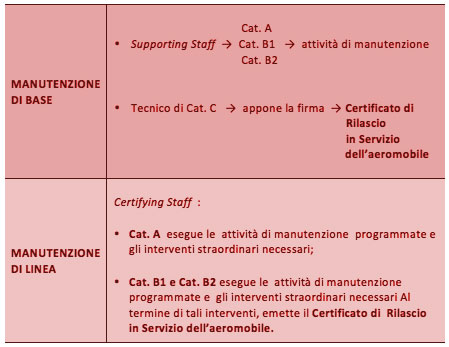Aircraft Dictionary
AIRCRAFT
Every machine that can sustain the atmosphere from air reactions different from those due to the ground effect (ICAO – Annex IV – May 1969). The aircraft consists of parts and elements, grouped into structures, systems, engines, propellers and rotors.
CAMO
(CONTINUING AIRWORTHINESS MAINTENANCE ORGANIZATION) It is the organization responsible for the continuing airworthiness of aircraft. The EU Regulation n. 1321/2014 – part M establishes that the aircraft operator as operator must have an organization responsible for the technical management of the aircraft to ensure continuous airworthiness and the conditions of safe use of the aircraft used. This organization, the CAMO, must be certified according to Part M – section G.
CERTIFICATE OF RECOGNITION
It is the final certificate that is issued to the candidate by the Training organization approved by the Competent Authority in accordance with Annex IV (Part-147) of Regulation n. 1321/2014, following the passing of the examination of the single module or of the entire Basic Training Course.
COMPONENT
Any engine, propeller, part or pertinence of an aircraft.
CERTIFICATE RELEASE TO SERVICE
It is the document with which the Certifying Staff, after having checked the completeness and the correct carrying out of the maintenance activities, as well as the respect of all the applicable procedures, authorizes the release in service of the aircraft. Essential conditions to proceed with the release in service is the possession of the Aircraft Maintenance License and the written declaration of the maintenance company that authorizes the Certifying Staff to issue the Certificate
EASA (EUROPEAN AVIATION SAFETY AGENCY)
Established with Regulation (EC) n. 1592/2002, EASA is the main protagonist of the European Union’s strategy in the field of aviation safety. Its mission is to promote the highest common levels of safety and environmental protection in the civil aviation sector.
EASA Form 19
EASA form 19. It is the form through which it is possible to ask the Competent Authority to issue, renew or modify the Aircraft Maintenance License.
ENAC (NATIONAL INSTITUTION FOR CIVIL AVIATION)
It is the body established in 1997 with Legislative Decree 250/97 as the only competent authority on technical regulation, certification, supervision and control in the civil aviation sector in Italy. ENAC deals with the many aspects of civil aviation regulation, control and supervision of the application of the adopted rules, the regulation of the administrative-economic aspects of the air transport system.
ICAO (INTERNATIONAL CIVIL AVIATION ORGANIZATION)
It is an autonomous United Nations agency charged with developing the principles and techniques of international air navigation, routes and airports and promoting the design and development of international air transport, making it safer and more orderly.
APPROVED MAINTENANCE ORGANISATION PART-145
It is a maintenance company recognized and approved by the Competent Authority and having the requirements indicated in Annex II (Part-145) of EU Regulation no. 1321/2014. The approval gives these organizations the privilege to carry out maintenance and the subsequent release into service of the aircraft, as well as the engines and components installed on them, used by the Public Transport operators approved by the Competent Authorities of the member states of the EASA. Starting from 28 September 2008, even for the “Large Aircraft” not used in Public Transport activities, there is an obligation to entrust the maintenance activities to the companies approved pursuant to Part 145.
MAINTENANCE COMPANY PART M- SEZ. F
It is a maintenance company that operates on aircraft and parts that: (a) are not used in Public Transport operations and (b) do not belong to the “Large Aircraft” category, recognized and approved by the Competent Authority based on the established criteria from Part M – Section F.
PRE-FLIGHT INSPECTION
Inspection performed before the flight to ensure that the aircraft is fit for the intended flight.
MAINTENANCE
BASIC MAINTENANCE
It is that type of maintenance that forces the aircraft to be hangared and therefore requires the availability of appropriate hangars and premises to carry out maintenance activities.
LINE MAINTENANCE
It is that type of maintenance that does not oblige the aircraft to be parked in the hangar, excluding the hypothesis in which adverse weather conditions require the use of the hangar or equivalent protections even in the case of minor interventions planned or rectification of inconveniences which they last over time.
AIRWORTHINESS
All processes that guarantee, at any time during their operating cycle, the compliance of the aircraft with the airworthiness regulations in force, as well as safety conditions.
CERTIFYING STAFF
Personnel authorized to release an aircraft, a component, a part or pertinence, following maintenance work performed.
HIGH CAPACITY AIRCRAFT
An aircraft, classified as an airplane, with a maximum take-off mass of more than 5700 kg or a multi-engine helicopter.
